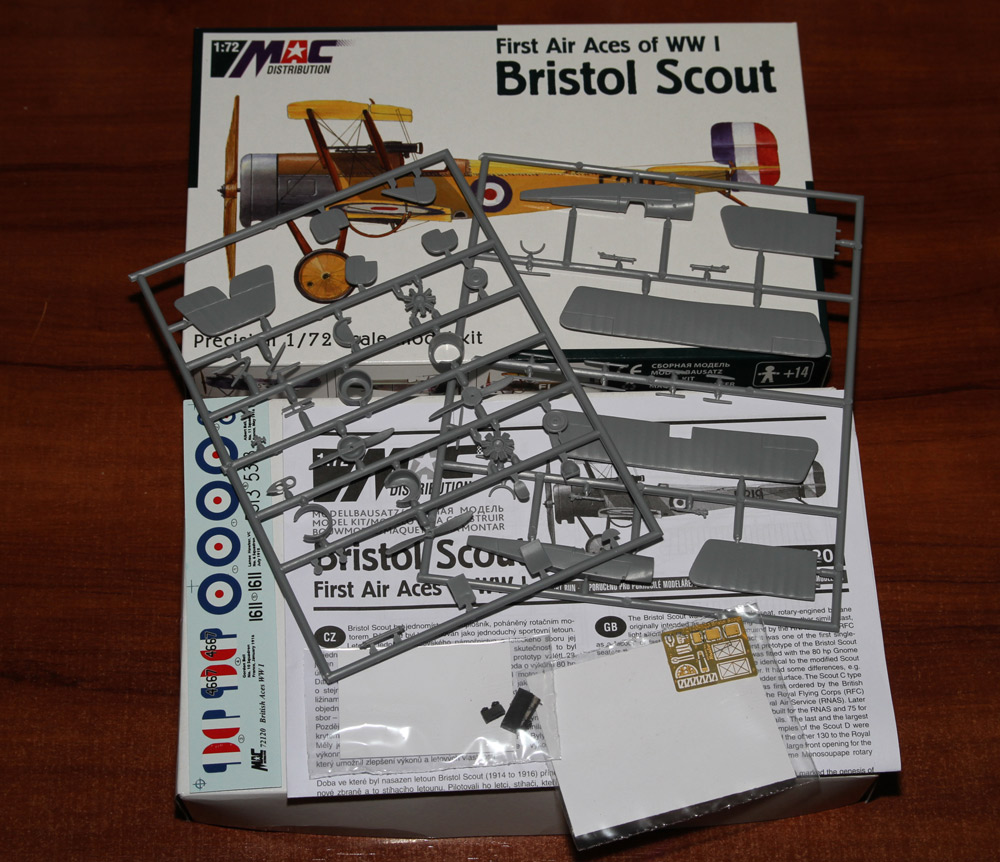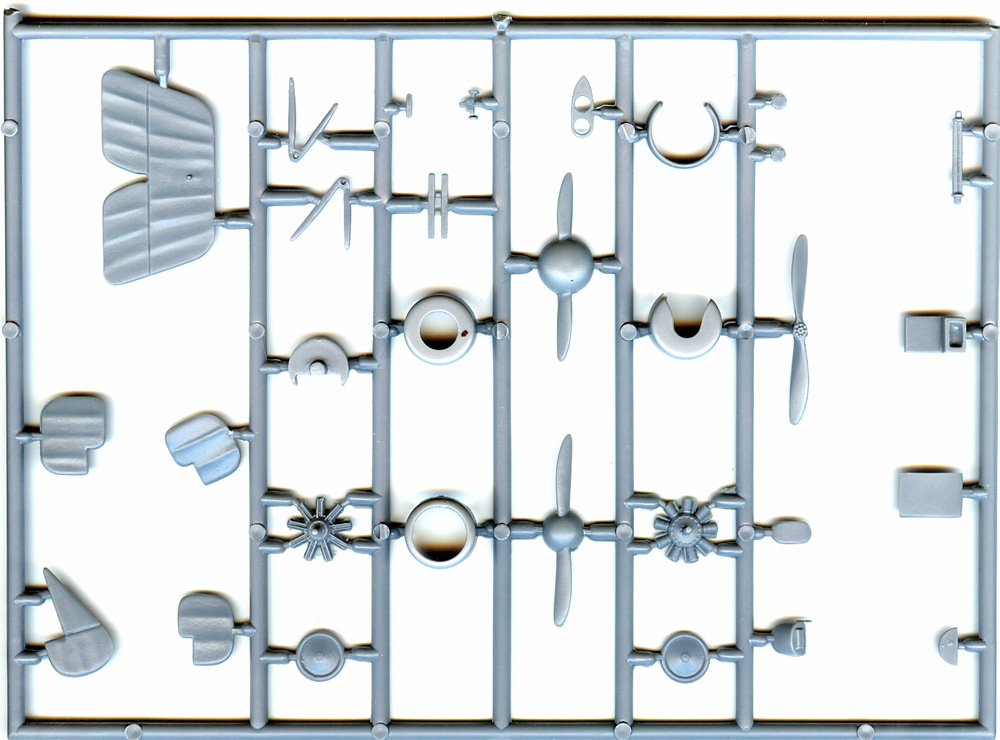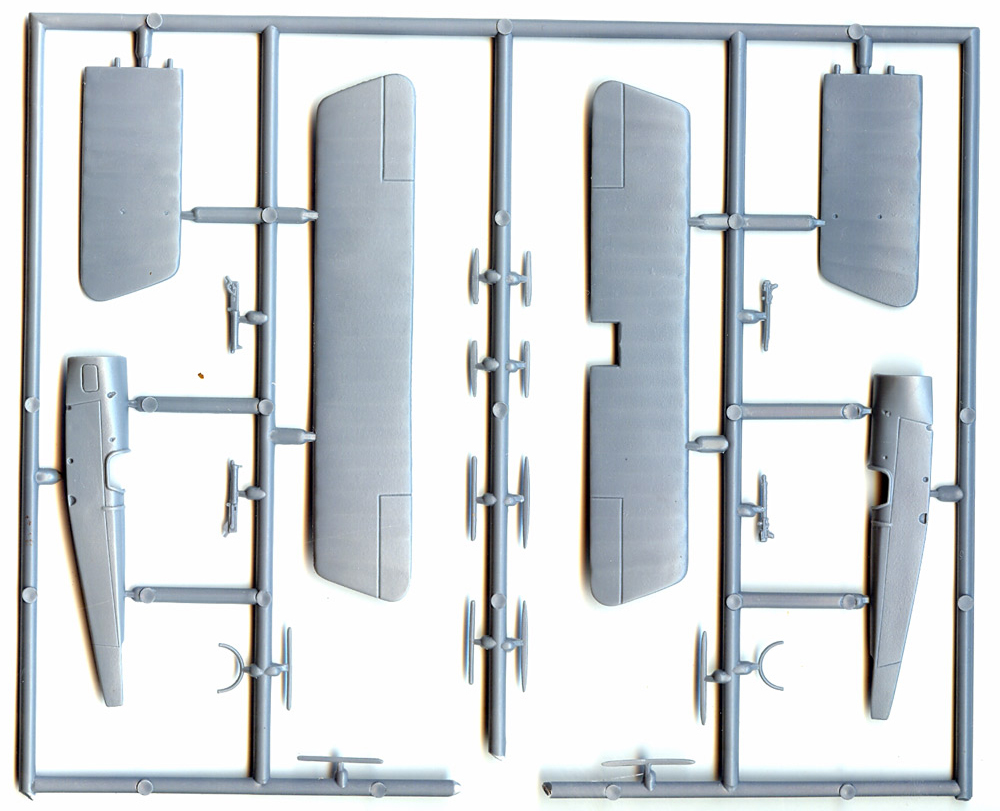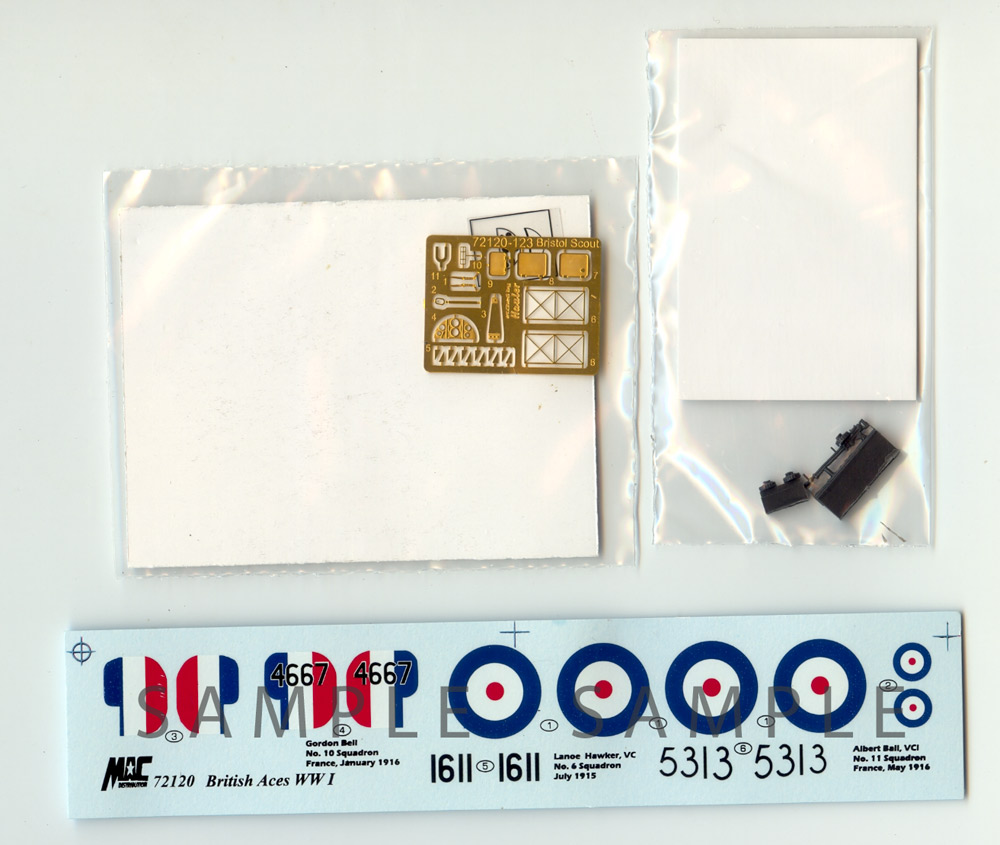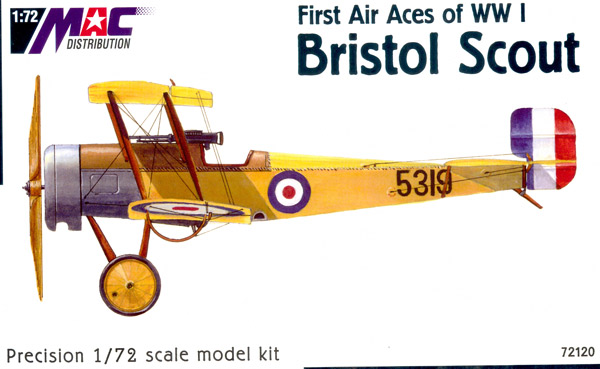
MAC Distribution 1/72 Bristol Scout
By Pedro Nuno Soares
The History Bit (well, hardly...)
Conceived and built between late 1913 and February 1914 with air racing in mind, the charming little product of the Bristol Colonial Aeroplane Co. Ltd, with production works number 206, would father a rather large lineage of 373 of fast and elegant aircraft that entered the annals of aircraft history as the “Bristol Scout”.
2 main variants of this fighter aircraft, that bears the distinction of being the mount on which Captain Lanoe Hawker earned the first Victoria Cross awarded for air combat related actions, can be identified over its development career, Types C and D.
These, in turn, were the developmental sequel to the 2 type B machines (purpose built for military evaluation purposes), which differed mainly from the Type A (the nomenclature given to the prototype after being equipped with a larger span set of wings, a open ended cowling to house a Le Rhône, replacing the original Gnôme, and wheel covers) in the larger rudder and longer cowling.
These days access to relevant information in fields that only something like a decade ago was mainly exchanged or absorbed by perusing the pages of special interest books, lies at the point of a click or two, so instead of paraphrasing what others have said before (this, in general terms, being the essence of knowledge building and sharing) I direct the reader to Wikipedia (where else… :-)) for a general outlook on the history of this important little aircraft that MAC had decided to produce in kit form in The Scale of scales.
https://en.wikipedia.org/wiki/Bristol_Scout
The Plastic Bit
The MAC Distribution kit of The Bristol Scout follows the same lines set by this brand for all his WW1 aircraft kit offers: a couple of well molded, flash free, injected sprues complemented by a small PE fret, a small acetate sheet for the windshield and instruments, and a very nice resin Lewis machine gun. Completing the box contents are the necessary instruction sheet and the very well printed decal strip with all that is needed for the three options proposed, all of type C aircraft, and all of illustrious names: Canadian Ace Gordon Bell, and British VC holders Lanoe Hawker and Albert Ball.
MAC proposes this kit in “two flavors” so it is no surprise that the injected bits, totaling 42 parts, have all that is needed to build both C and D variants, including a choice of engines (Le Rhône 80 hp and 100 hp Gnôme Monosoupape), three types of cowlings, 4 types of rudders , three types of propellers (with and without spinner), two types of top wings, and a choice of Lewis and Vickers machine guns. (I haven’t really given this an in depth examination, but I’d bet that a type B could also be made from all of the parts provided, this entailing mostly reshaping the tailplane and reducing the dihedral on the wings).
Using the Ian Stair drawings on Jack Bruce’s Datafile, it becomes apparent that dimensionally wise the kit is accurate enough, although scaling down the published wingspan of 7.49m would generate a 1/72nd counterpart of 10.4 cm, while the kit part spans 10,1 cm (in truth, the fuselage also seems to be about 1 mm to short at the tail end, but this is well within my comfort limits).
Given that the ailerons on the D type were shorter than on the C, MAC chose not to represent them on the wings and instead they urge you to scribe the hinge lines directly on the kit part (a good choice and something well within the ability of any modeler, no matter how little experience one has). What isn’t mentioned is the fact that if your building a C, the hinge lines of the ailerons on the upper wing will have to, conversely, be partially filled and a new lateral line scribed in, because the ailerons on the top wing were the same size as those on the lower. Again, a simple operation and well within reach of any modeler (but a minus mark for failing to point this out in the instruction sheet)!
I also found the ribs to be a bit to prominent on the wings, a common occurrence in kits of fabric covered aircraft. The usual wisdom says that a couple of swipes with sandpaper is the cure for this, but I have never agreed with this approach because the result is, instead of ribs, a sequence of flats on the wings, what is really worse than overstated ribs. So either you can live with it and trust that a couple of coats of paint will solve the problem (my usual pragmatic approach), or you might go all the way and sand off all rib detail until you have a flat wing and reinstate the ribs with decal strip or strips of .005 thou plastic card, or with any other method, if you feel so inclined.
The PE fret includes seat belts, control horns, side structures for the cockpit walls, a control column (these last two I wont be using, because even if they look nice, they are easy to replicate in plastic strip and stretched sprue, for a much more realistic 3D look), and some parts I suppose are meant for the D type because no mention is made to them in the instruction sheet (3 of these I believe are engine access panel covers, so I might end up using one after all :-)).
Something that also stroke my attention was the fact that the master makers were careful enough to emboss the holes for the cabane struts on the fuselage parts at an angle, to ensure easy placement of the cabanes at the correct incidence angle. You’ll have to enlarge these locating holes a bit as usual, of course, but if you follow the already set in angle you’ll have a lot less trouble later when gluing the cabane struts in. Well done MAC!
The Conclusion Bit...
So there it is: my first impression is that this won’t be a difficult kit to build, and I’m sure the end result will look pleasing straight from the box, being also a good base for an exceptional modeler to build an exceptional model (not me….I’m just the piano player….)
If you’re looking for references, you need not look any further than the Datafile, since it is full of very useful and well captioned photographs, excellent drawings etc.
Sorry, say again?? Yes. Of course I recommend it. Even to you, who have, never done a biplane (after so many F-16s and Messerschmitts, you know you’re dying for a real aircraft…)
Thanks to MAC for the review sample.

